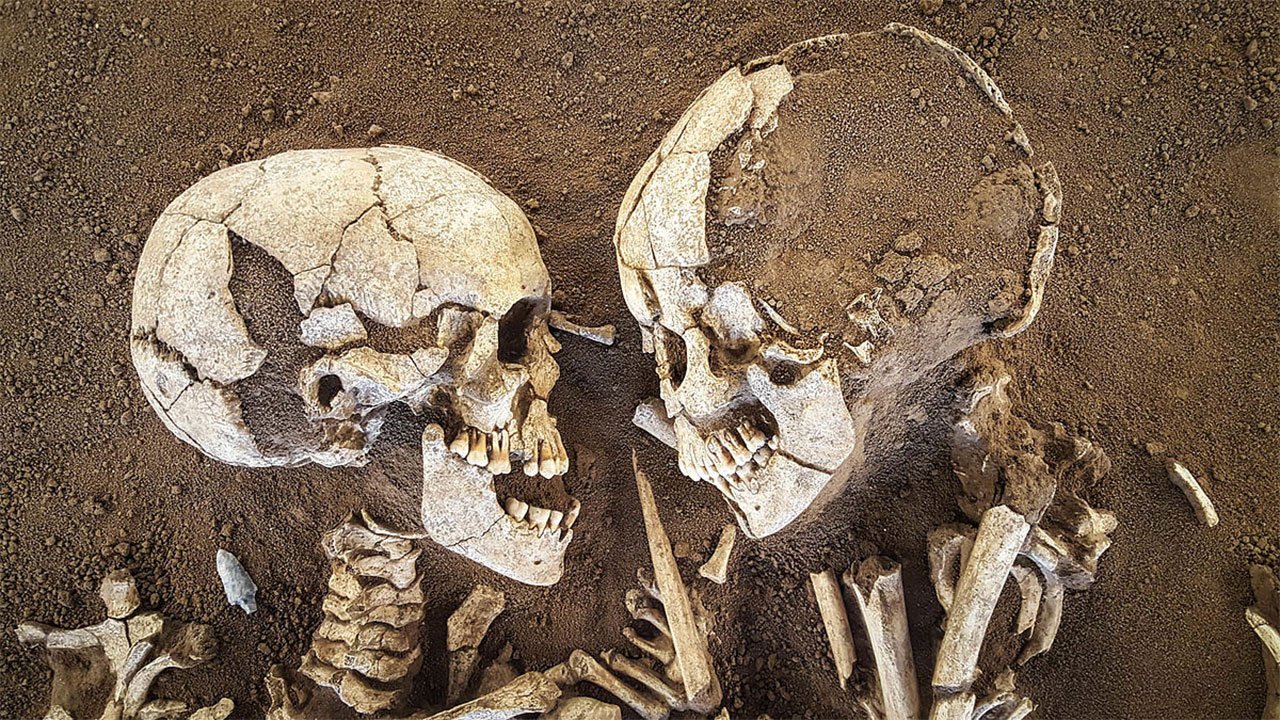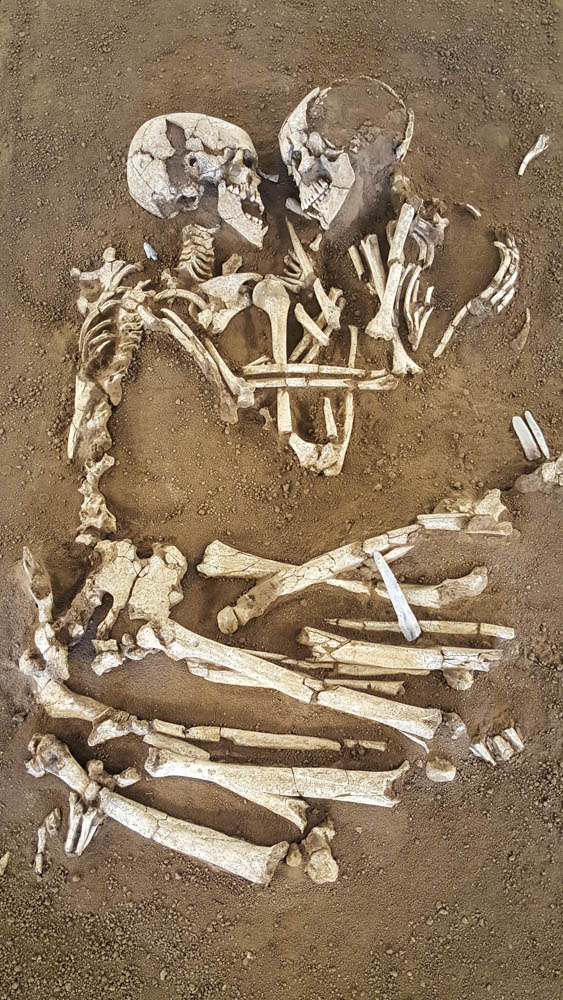In 2007, archaeologists near Mantua, Italy, discovered the skeletal remains of two individuals, famously known as the “Lovers of Valdaro.” This Neolithic couple, a man and woman aged around 20 at death, were found in a tightly intertwined embrace, their faces turned toward one another. The burial, dating back approximately 6,000 years, is remarkable for its emotional resonance and archaeological significance.

The Discovery and Its Significance
The Lovers were found in a single grave, positioned deliberately in a gesture that suggests deep symbolic meaning, perhaps signifying love or a ritual tradition. Analysis revealed no signs of trauma, ruling out violent death and pointing to a ceremonial burial. Flint tools placed alongside them were likely offerings rather than weapons, reflecting Neolithic burial customs.

Cultural and Emotional Impact
The embrace of the Lovers of Valdaro has captured the imagination of many, symbolizing themes of love and human connection that transcend millennia. Their burial reflects the sophistication of Neolithic societies in their treatment of the dead, with a possible emphasis on emotional bonds and spiritual beliefs.

Legacy
Now displayed at the Archaeological Museum of Mantua, the Lovers continue to fascinate visitors and scholars, offering a rare glimpse into the shared humanity of ancient peoples. Their story serves as both a historical artifact and a timeless emblem of love and remembrance.

